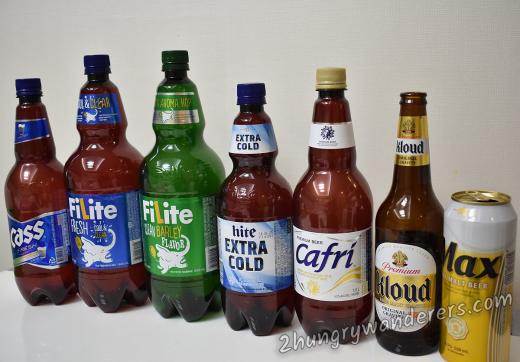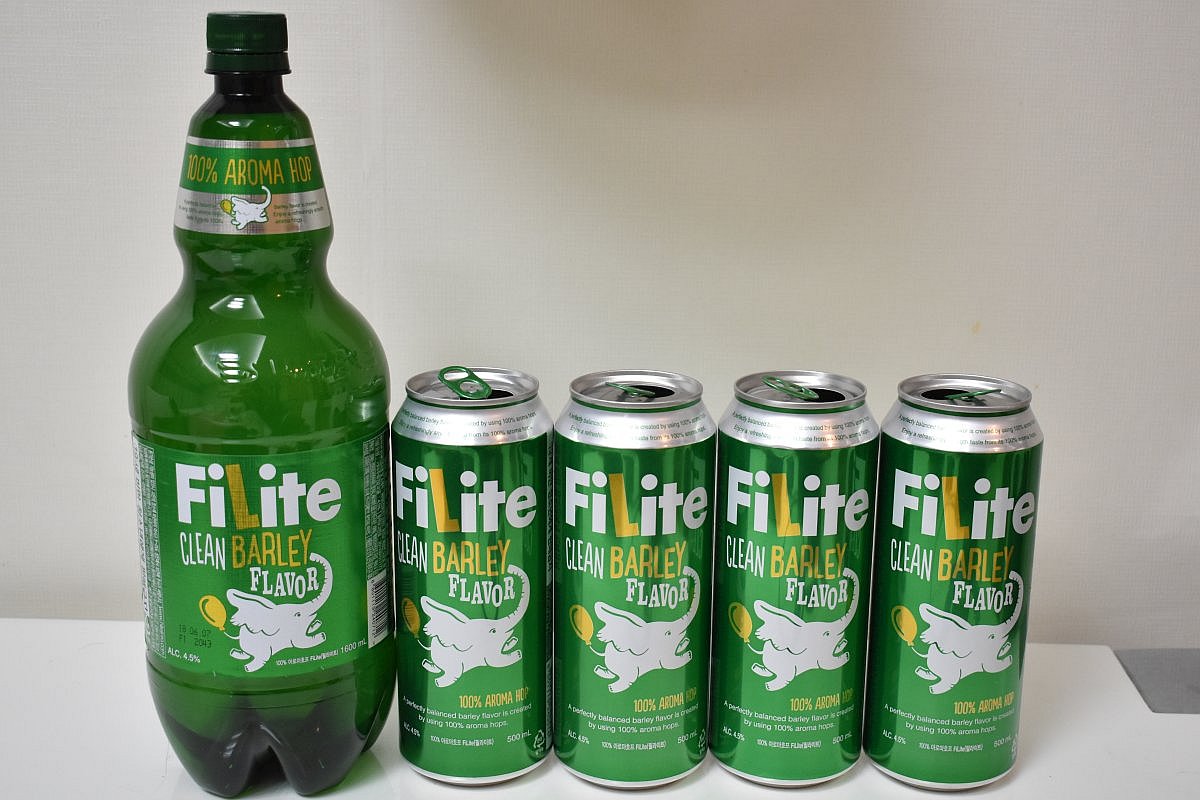
Visiting new places for me is always a great opportunity to enjoy the local beers, because you can get a Heineken (almost) everywhere, but where is the fun in that? With a whole month to spend in Seoul I decided to taste as many South Korean brews as possible and prepare a comprehensive local beer guide that may help other travelers and beer lovers. After trying the first few beers I quickly realized that this will not be a very positive post, but lets start from the beginning...
Why is South Korean beer so bad?
In 2012 a British journalist wrote an article saying that South Korean beer is really bad, probably the worst in the world. In the debate that followed even harsher terms were used, some people going as far as comparing it to urine. I partially agree, all the Korean beers I tried were more or less disappointing, maybe good enough to offer some refreshment if served cold in the summer, but definitely not a first choice.
There is a very simple reason for the lack of flavor and despite many people's opinion it is not historical or cultural. Beer is a relatively new drink in South Korea - introduced in the early 20th century, actually gaining popularity in the last 2-3 decades, but that's not the issue - they have high tech breweries and (imported) crafting knowledge. The big problem lies in the ingredients used there. Beer as the rest of the world knows it is made with hops, barley and some other things, but Koreans don't have barley, so they use rice instead. That's like making a hamburger, but instead of a beef patty you use some baked potatoes - the result may be satisfactory for some people, but not for those expecting a real hamburger. Actually it's a bit more complicated than that - they don't use just rice, but a mix of rice and barley, with barley content between 5 and 20%, where in "real" beer it is 100%. The reason for this is economical - locally produced barley is very limited and at the same time importing raw barley has high import taxes making it impossible for the breweries to use 100% barley and offer a competitive price tag of their products.
This situation may seem like a disaster for the beer enthusiasts, but I got the feeling that Koreans are not really worried about it. The workaround is simple - importing beer. In the big supermarkets the trend is obvious - the "Imported beer" section is 2-3 times larger than "Local beer", offering a huge variety from every corner of the world, from all the famous labels like Corona, Budweiser and Asahi to craft beers coming from Australian microbreweries.
What about craft beer you ask? The craft beer market in South Korea is in it's very, very early stages, due to recent changes in laws and regulations the first microbreweries are about 5 years old at most. Some trendy neighborhoods have a bar or two, but the choice is limited and the owners and master brewers in those establishments are all westerners bringing their American/German/whatever recipes and probably ingredients to make beer in Korea. As the result is more "taste of home" and doesn't have anything to do with South Korean culture, cuisine or brewing inspiration and I decided to keep craft beer out of the scope and focus on mainstream, mass produced South Korean beer, so let's start with...
The rest
As I was really devoted to give my readers a complete guide to the local beer varieties in South Korea I drank a lot of it, purely for research purposes (hic). Here is my personal opinion about each one of the drinks that didn't win my gold award, presented to you in the order I tried them.
- Cass Fresh - Oh, the excitement - my first South Korean beer! Surprisingly pale color, matching light taste of almost-decent lager mixed with water. Some people claim tasting cardboard or wet rice notes, I didn't even feel that and whatever flavor it has it disappears immediately. After the first sip I thought I had some ultra-light beer in my hand, had to check the label - amazing - 4.5% ABV, but feels like alcohol free beer.
- Cass Light - This one I just decided to pass, as the regular one tasted like beer flavored sparkling water, so I lost all interest in finding out that the "light" variant is.
- Kloud - For my second attempt I decided to go for the higher end of the market, more expensive than most Kloud is advertised as "pure malt beer" (this doesn't mean barley malt, rice malt is still malt), made with European hops and German yeast, but the result is slightly below average lager. It may be better than most Korean beers, but has almost nothing in common with German lagers. Still, I have to admit, Kloud is drinkable and if it wasn't so bland it would've been my top choice.
- FiLite Fresh (FiLite Blue) - New beer released in 2018, but very popular due to it's low price, very light and refreshing thanks to heavy sour notes and a lot of bubbles. Somebody along the line decided that maybe Korean beer has too much hops, so the end result tastes more like a cider than a beer. Not a bad way to quench your thirst.
- Hite Extra Cold - The name is not just a name, it is a great recommendation - to enjoy this drink, make sure it is extra cold, this makes it drinkable. Slightly sweeter than the average lager, citrus and caramel notes, but still lacks real beer flavor.
- Cafri - Another premium beer, the first thing to notice here is the bright golden color, they were so proud of it the beer comes in clear bottles (330 ml). Not unpleasant, but after an initial hint of sweetness lacks any distinctive taste, very watery.
- Max - That's hands down the worst on the list, barely managed to finish the can. This will probably be the first time to read a beer review like this but the image that popped in my mind from the aroma and taste of Max was of old machinery from an abandoned hospital - mold, metal, medicine. The only suitable match for this beer is an extremely spicy meal that burns all your taste buds, so you really don't care what you are drinking.
And now it is time to announce the winner...
The best: FiLite - Clean Barley Flavor

After the success with the blue (FiLite Fresh) I decided to give the green one - FiLite Clean Barley Flavor - a go too. It was a pleasant surprise to find out that the cheapest local beer on the Korean market is also the best. Clean Barley Flavor has all the refreshing power of it's blue variant, but also has stronger, hoppy flavor without getting too bitter. About the precious barley that is even included in the name - I have a suspicion that it is not real barley that actually participated in the process of brewing the beer, feels more like a barley essence was added to the almost ready brew as a flavoring agent. In any case it is a beer that goes down well and even if I would rate it 4.5/10, FiLite - Clean Barley Flavor is the best South Korean beer in my opinion.
What are your impressions of Korean beer? Tell us in the comments below.
Comments